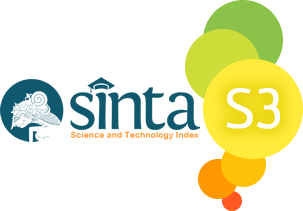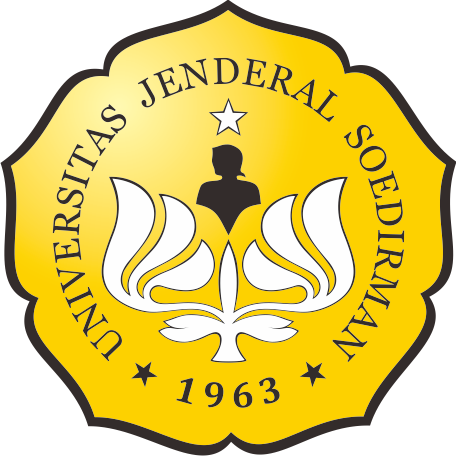Online Submissions
Already have a Username/Password for Scripta Biologica?
Go to Login
Need a Username/Password?
Go to Registration
Registration and login are required to submit items online and to check the status of current submissions.
Author Guidelines
Scripta Biologica accepts original scientific research papers written in Indonesian or English. The submission and publishing processes are free of charge. The document should be prepared using a Guide Template and saved in Microsoft Office Words format (.doc, .docx) on A4 paper size with 10 points body text of Cambria typeface, 2,5 cm for top margin and 2 cm for left, right, and bottom margin. The length of the document is unlimited, but editor recommends no more than ten pages of text, excluding tables, figures, and attachments that should be inserted at the end of the manuscript. Tables should be attached or inserted in a standard table of Microsoft Word or Excel. All figures should be provided in JPG, JPEG, or PNG formats with a 300 dpi resolution, the dimensions (width and height) of at least 800 px, and the aspect-ratio remain unchanged.
The manuscript should contain:
- Title of the manuscript should be written in brief, clear, and content informative sentence, no more than 20 words.
- First and last name of the author(s) should be written completely. Institution name and address should also be written explicitly. Author for correspondence along with email address is required.
- Abstract should be written concisely containing the research objectives, primary research results and, if any, the conclusions and their implications. Below the abstract five keywords should be provided indicating objects, locations, unique methods used.
- Introduction should be composed of adequate backgrounds and the importance of research, it may also include a brief review of past research directly related to the findings.
- Methods should be emphasized on the procedures and data analysis. Only specific equipment should be presented while the standard equipment should not. The research procedure should be described in a coherent and precise manner. The design approach and method of analysis should be explained.
- Results and Discussion should be written containing research results that clearly presented and described. The discussion should be written thoroughly represents the causal effect of the research results mainly explains why and how the results of the research came up, it may also explain the advantages and disadvantages, the constraints that appear in the study and so forth and possible solutions.
- Conclusion should be written concisely to conclude the results of research without further explanation.
- Acknowledgments if necessary can be written at the end of the manuscript before the References, all sources of institutional, private, and corporate financial support for the work must be fully acknowledged, and any potential conflicts of interest should be stated.
- References should be composed containing only references referred to in the manuscript in alphabetic order according to the bibliographic format of the CSE (Council of Science Editors) Name-Year sub-style.
A complete reference for CSE bibliographic format can be found by clicking the link below:
http://www.scientificstyleandformat.org/Tools/SSF-Citation-Quick-Guide.html
We encourage author(s) to write the References using Reference-Manager software. There are options for such software, freeware or paid software. Links for free software recommended by the editor are provided below:
A reference guide examples of the References using CSE bibliographic Name-Year format can be found below:
Submission Preparation Checklist
As part of the submission process, authors are required to check off their submission's compliance with all of the following items, and submissions may be returned to authors that do not adhere to these guidelines.
- The submission has not been previously published, nor is it before another journal for consideration (or an explanation has been provided in Comments to the Editor).
- The submission file is in Microsoft Word (.doc, .docx) document file format.
- The manuscript should be prepared using a Guide Template available for download at the following link Guide Template. The length of the document is unlimited, but editor recommends no more than ten pages of text, excluding tables, figures, and attachments that should be inserted at the end of the manuscript.
- Tables should be attached or inserted in a standard table of Microsoft Word or Excel. All figures should be provided in jpg, jpeg, or png formats with a 300 dpi resolution, the dimensions (width and height) of at least 800 px, and the aspect-ratio remain unchanged.
- Where available, URLs for the references have been provided.
- The text adheres to the stylistic and CSE (Council of Science Editors) bibliographic Name-Year format outlined in the Author Guidelines.
Copyright Notice
Authors retain copyright and grant the journal right of first publication with the work simultaneously licensed under a Creative Commons Attribution License that allows others to share the work with an acknowledgement of the work's authorship and initial publication in this journal.
Scripta Biologica applies the Creative Commons Attribution (CC BY SA) license to works we publish. Under this license, authors retain ownership of the copyright for their content, but they allow anyone to download, reuse, reprint, modify, distribute and/or copy the content as long as the original authors and source are cited.

Except where otherwise noted, content on this site is licensed under a Creative Commons Attribution-ShareAlike 4.0 International License.
Privacy Statement
The names and email addresses entered in this journal site will be used exclusively for the stated purposes of this journal and will not be made available for any other purpose or to any other party.
Author Fees
This journal charges the following author fees.
Article Submission: 0.00 (IDR)
Authors are required to pay an Article Submission Fee as part of the submission process to contribute to review costs.
Fast-Track Review: 500000.00 (IDR)
With the payment of this fee, the review, editorial decision, and author notification on this manuscript is guaranteed to take place within 4 weeks.
Article Publication: 0.00 (IDR)
If this paper is accepted for publication, you will be asked to pay an Article Publication Fee to cover publications costs.
If you do not have funds to pay such fees, you will have an opportunity to waive each fee. We do not want fees to prevent the publication of worthy work.











